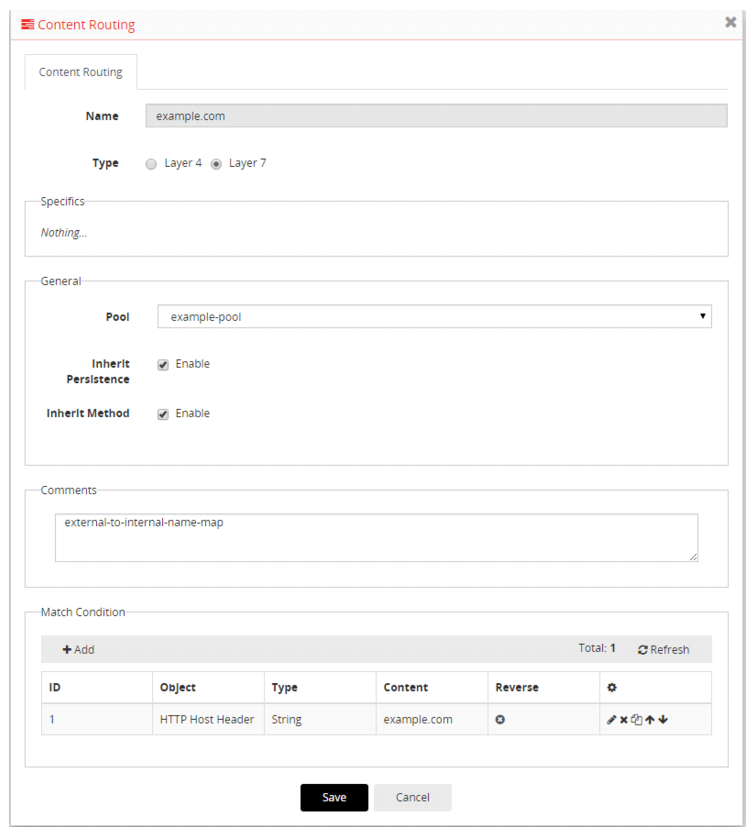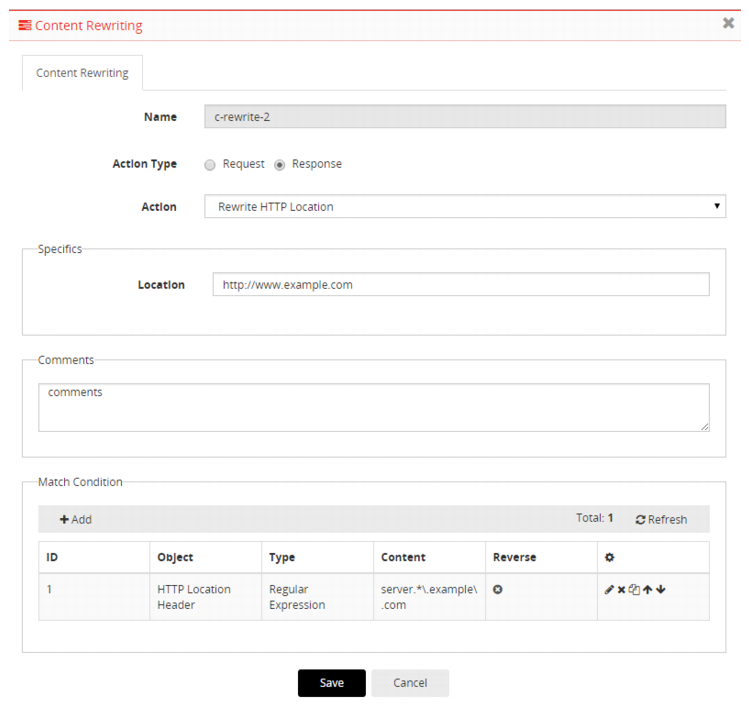Example: Rewriting the HTTP response when using content routing
It is standard for web servers to have external and internal domain names. You can use content-based routing to forward HTTP requests to example.com to a server pool that includes server1.example.com, server2.example.com, and server3.example.com. When you use content routing like this, you should also rewrite the Location header in the HTTP response so that the client receives HTTP with example.com in the header and not the internal domain server1.example.com.
Figure 28 shows a content routing rule that maps requests to example.com to a server pool.
Figure 29 shows an HTTP response rule that matches a regular expression and rewrites a literal string. In the match condition table, the rule is set to match the regular expression
server.*\.example\.com in the HTTP Location header in the response. The rewrite action specifies the absolute URL
http://www.example.com.



